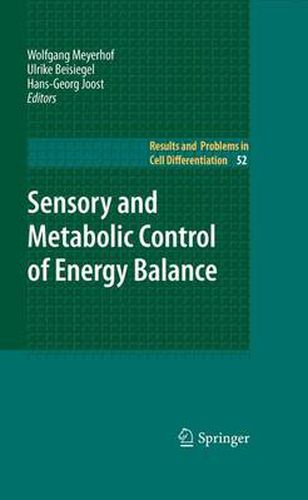Readings Newsletter
Become a Readings Member to make your shopping experience even easier.
Sign in or sign up for free!
You’re not far away from qualifying for FREE standard shipping within Australia
You’ve qualified for FREE standard shipping within Australia
The cart is loading…






This title is printed to order. This book may have been self-published. If so, we cannot guarantee the quality of the content. In the main most books will have gone through the editing process however some may not. We therefore suggest that you be aware of this before ordering this book. If in doubt check either the author or publisher’s details as we are unable to accept any returns unless they are faulty. Please contact us if you have any questions.
During the last two decades, the prevalence of obesity has dramatically increased in western and westernized societies. Its devastating health consequences include hypertension, cardiovascular diseases, or diabetes and make obesity the second leading cause of unnecessary deaths in the USA. As a consequence, obesity has a strong negative impact on the public health care systems. Recently emerging scienti?c insight has helped understanding obesity as a complex chronic disease with multiple causes. A multileveled gene-environment interaction appears to involve a substantial number of susceptibility genes, as well as associations with low physical activity levels and intake of high-calorie, low-cost, foods. Unfor- nately, therapeutic options to prevent or cure this disease are extremely limited, posing an extraordinary challenge for today’s biomedical research community. Obesity results from imbalanced energy metabolism leading to lipid storage. Only detailed understanding of the multiple molecular underpinnings of energy metabolism can provide the basis for future therapeutic options. Numerous aspects of obesity are currently studied, including the essential role of neural and endocrine control circuits, adaptive responses of catabolic and anabolic pathways, metabolic fuel sensors, regulation of appetite and satiation, sensory information processing, transcriptional control of metabolic processes, and the endocrine role of adipose tissue. These studies are predominantly fuelled by basic research on mammalian models or clinical studies, but these ?ndings were paralleled by important insights, which have emerged from studying invertebrate models.
$9.00 standard shipping within Australia
FREE standard shipping within Australia for orders over $100.00
Express & International shipping calculated at checkout
This title is printed to order. This book may have been self-published. If so, we cannot guarantee the quality of the content. In the main most books will have gone through the editing process however some may not. We therefore suggest that you be aware of this before ordering this book. If in doubt check either the author or publisher’s details as we are unable to accept any returns unless they are faulty. Please contact us if you have any questions.
During the last two decades, the prevalence of obesity has dramatically increased in western and westernized societies. Its devastating health consequences include hypertension, cardiovascular diseases, or diabetes and make obesity the second leading cause of unnecessary deaths in the USA. As a consequence, obesity has a strong negative impact on the public health care systems. Recently emerging scienti?c insight has helped understanding obesity as a complex chronic disease with multiple causes. A multileveled gene-environment interaction appears to involve a substantial number of susceptibility genes, as well as associations with low physical activity levels and intake of high-calorie, low-cost, foods. Unfor- nately, therapeutic options to prevent or cure this disease are extremely limited, posing an extraordinary challenge for today’s biomedical research community. Obesity results from imbalanced energy metabolism leading to lipid storage. Only detailed understanding of the multiple molecular underpinnings of energy metabolism can provide the basis for future therapeutic options. Numerous aspects of obesity are currently studied, including the essential role of neural and endocrine control circuits, adaptive responses of catabolic and anabolic pathways, metabolic fuel sensors, regulation of appetite and satiation, sensory information processing, transcriptional control of metabolic processes, and the endocrine role of adipose tissue. These studies are predominantly fuelled by basic research on mammalian models or clinical studies, but these ?ndings were paralleled by important insights, which have emerged from studying invertebrate models.